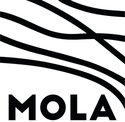Spatial Data and Images from the Lea Valley Mapping Project
David Jamieson, Jane Corcoran, Graham Spurr, Craig Halsey, Emily Burton, 2022. https://doi.org/10.5284/1097702. How to cite using this DOI
Data copyright © Museum of London Archaeology unless otherwise stated
This work is licensed under a Creative Commons Attribution 4.0 International License.
Primary contact
Museum of London Archaeology
Mortimer Wheeler House
46 Eagle Wharf Road
London
N1 7ED
UK
Tel: 020 7410 2285
Fax: 020 7410 2201
Resource identifiers
- ADS Collection: 4665
- ALSF Project Number: 3282
- DOI:https://doi.org/10.5284/1097702
- How to cite using this DOI
Introduction

The Lea Valley Mapping Project was funded by English Heritage (EH, now Historic England) under the Aggregates Levy Sustainability Fund (ALSF) and carried out by Museum of London Archaeology (MOLA) during the period 2002–7 in collaboration with the British Geological Survey (BGS), supported by a team of academic university- and EH-based advisers. The lower Lea valley in London lies in an area where extensive quarrying has been carried out in the past. The impact of any future quarrying or development will involve large-scale groundworks that will affect archaeological deposits. Very little was known about the archaeology that lay within the buried deposits of the Lea valley, but ALSF funding has provided an opportunity to redress this, through a mapping project designed to predict areas of archaeological potential within the buried and unknown Quaternary stratigraphy. These deposits have previously been mapped by the BGS mainly as Holocene alluvium and Pleistocene river terraces, without any correlation between potentially commercially valuable aggregates or zones of high archaeological importance.
The long history of geological and geotechnical investigation in the area has created a large archive of borehole logs (over 3000) and other observations which are held by the BGS. Since it is a built-up area, remote sensing of the buried landscape and features such as palaeochannels is not possible and contemporary observations are only possible where new invasive works take place. There have been no large-scale archaeological interventions in the study area; however, numerous small-scale excavations and observations have taken place, and show that the valley holds a rich archaeological resource within the drift deposits and made ground. During the course of the project a geoarchaeological database of subsurface alluvial deposits was created from borehole data and archaeological records covering the study area. By using both ArcView and TerraStation II (TSII) software, ways were explored to look at the stratigraphic and geographic perspective of the data and to link the sequence of deposits to the distribution of archaeological evidence and landscape characteristics. Through interrogation of the database and by linking similar deposits in adjacent boreholes, deposit models were generated that reconstructed the subsurface stratigraphy of the modern floodplain and adjacent river terraces.
A series of distribution plots and working cross sections through the subsurface stratigraphy of the study area was generated from the data using TSII, and modelled using GIS-based software to produce contour plots and to characterise the buried landscape, by linking the buried topography with the characteristics of the overlying deposit sequence. As a result of this process, it became apparent that, despite its uneven distribution, the database has a significant contribution to make towards understanding the Quaternary sequence and archaeology of the lower Lea. In order to do this, the study area was subdivided into five ‘mapping areas’; in each, by using the database and the deposit models produced, the project team have been able to predict zones of archaeological and palaeoenvironmental potential. The data and modelling have also been used to demonstrate the modelling’s application across the study area in a series of short thematic studies: identifying the river terrace gravel aggradations; examining Quaternary environments; predicting Mesolithic sites; and linking settlement patterns with landscape characteristics. The fieldwork undertaken by MOLA–Pre-Construct Archaeology (PCA) on the Olympics Park site has also been used to ‘ground truth’ the validity of the modelling.
The approach to subsurface mapping as used in the Lea Valley Mapping Project has transformed the way we can assess archaeological potential and its concomitant risk to developers and extraction companies in the lower Lea. Although of particular relevance to areas where the deposits of archaeological interest lie deeply buried beneath thick alluvium and made ground, the approach of examining past characteristics alongside archaeology at a large enough scale to make archaeological distributions meaningful is universally applicable. Although the BGS mapping covers few deposits suitable for future gravel extraction in the lower Lea, the strategies devised and modelling undertaken in this area could be readily applied to other areas where there is much greater potential for future aggregate extraction.
This project was published as Corcoran, J., Halsey, C., Spurr, G., Burton, E. and Jamieson, D (2011). Mapping past landscapes in the lower Lea valley: a geoarchaeological study of the Quaternary sequence, MOLA Monograph Series 55. More information on this publication can be obtained on the MoLA publications webpages.
The ADS digital archive includes the gazetteer and databases of archaeological, past environmental and dating evidence compiled for the project along with the shapefiles of the semi-interpreted project data, interpolated geoarchaeological models, and selected figures from the publication.







